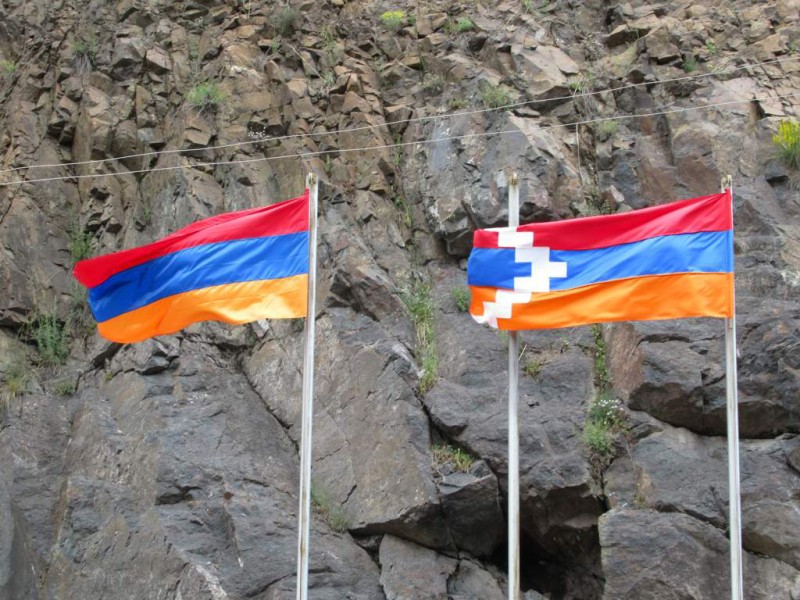On October 31, Armenian Prime Minister Nikol Pashinyan met with Russian President Vladimir Putin and Azerbaijani President Ilham Aliyev in Sochi to discuss steps to normalize relations between Yerevan and Baku and a longer-term peace deal that would finally end the decades-long, on-and-off conflict over Nagorno-Karabakh. This willingness on both sides to come to the negotiating table is without question welcome news. However, the two parties seem to want to talk about peace on different terms and without addressing core human rights issues in their respective countries in connection with the conflict.
It is of course difficult to compare the human rights situations in the neighboring countries. Still, neither Armenia nor Azerbaijan has fully acknowledged the crimes committed during the conflict or has held those responsible accountable. Nor has either country taken appropriate measures to properly redress victims or combat hatred of the other in their societies. If in Azerbaijan the government sponsors a theme park dehumanizing Armenians, in Armenia politicians have done nothing to stop anti-Azeri and anti-Turkish rhetoric in their own ranks such as when members of the opposition in parliament recently chanted “Armenia without Turks.”
Unfortunately, political elites in both countries have monopolized the narrative of the Nagorno-Karabakh conflict since it began in the late 1980s, defining it as a contest between competing principles of “the right to self-determination” and “the right to territorial integrity.” The populations most directly affected by conflict have been largely excluded from the narrative as well as the peace process.
Meanwhile, the war has taken a heavy, disproportionate toll on these relatively small nations. In terms of casualties, it has been one of the bloodiest conflicts of the post-Soviet era. Since the war’s outset, over a million people have been displaced from their homes, more than 4,000 individuals have gone missing, and hundreds have been indiscriminately killed or injured by landmines. For these innumerable victims and their families, the violations and losses they suffered have been compounded by socioeconomic hardships, political isolation, and discrimination.
The problem is that political elites in Armenian, Azerbaijan, and Nagorno-Karabakh, many of whom have profited from war, have created inequitable economic and political power structures that do little to uphold human rights or promote democracy. As a result, both Armenians and Azeris affected by the conflict have been left without access to any platform or channel—local or international—to make their voices heard and the harms they experienced and their demands for redress known.
Both Armenia and Azerbaijan have used political and judicial mechanisms at the United Nations, European Union, Council of Europe, and other multilateral institutions to draw attention to or seek accountability for conflict-related human rights abuses. Unfortunately, however, these actions for most part have amounted to little more than “lawfare,” whereby both sides have used these official processes to strengthen their positions rather than actually address the violations and the needs of victims.
The 2018 revolution in Armenia has opened a window of opportunity to strengthen democratic institutions and develop a culture of democracy and respect for human rights. Unfortunately, the 2020 war with Azerbaijan, and 2022 Russia invasion of Ukraine, only served to consolidate the power of autocratic forces in the region, leaving people at the mercy of war-profiteering nationalists and vulnerable to recurring cycles of violence.
That said, the current peace negotiations between Armenia and Azerbaijan—whether brokered by Moscow, Brussels, or Washington—offer measured hope for an agreement that could at last resolve the dispute over Nagorno-Karabakh, but only if it addresses the rights and needs of conflict victims. Such an agreement could also signal the beginning of a more peaceful, democratic, inclusive, and equitable future for the region.
______________
PHOTO: The flags of Armenia (left) and Nagorno Karabakh (right) fly together at the highway border crossing between the two countries. (David Stanley/Flickr)

